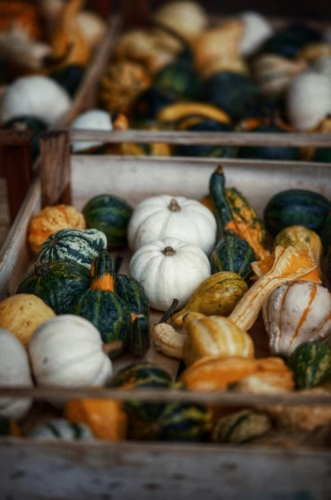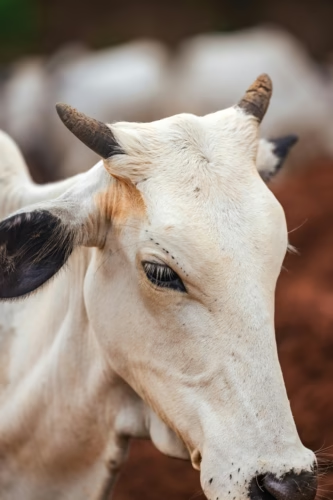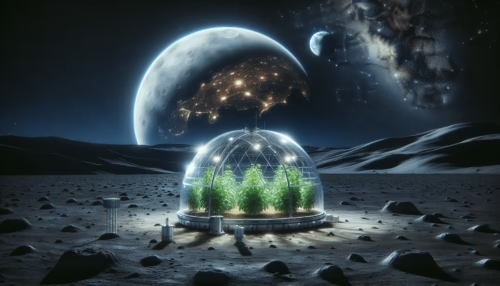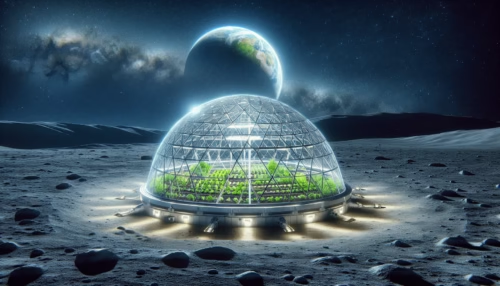Lunar Agriculture: Can We Really Grow Food on the Moon? Have you ever wondered if it’s possible to cultivate crops on the Moon, the mystical rock that has inspired countless myths, poems, and awe? As our space exploration ambitions expand beyond Earth, a serious question has emerged among scientists and explorers alike: Can we actually grow food on the Moon? This isn’t merely a question of curiosity. It is an inquiry integral to human expansion into space, one that impacts logistics, sustainability, and the viability of future colonies on extraterrestrial terrains.
In this comprehensive piece, you’ll discover the intriguing potential of lunar agriculture. Using a variety of sources and informed speculation, we venture into an exploration of the hurdles and possibilities that come with the ambitious pursuit of growing food on the Moon. We’ll delve into the Moon’s history in space exploration, examine the impact of its unique environment on agriculture, and explore the technological innovations that make this endeavor conceivable.

Table of Contents
Historical Context and Significance
Humanity’s fascination with the Moon is as old as time itself, yet the notion of lunar colonization entered serious scientific discourse only in the 20th century. Amidst the fervor of the Space Race, both Soviet and American space programs sought to explore this celestial neighbor. The Apollo missions, beginning in the late 1960s, were the most tangible expression of this fascination. These missions ignited a dream that one day humans might not only visit but also reside on the Moon.
Early Lunar Exploration
The 20th century heralded unprecedented lunar exploration efforts, reaching a crescendo with the Apollo 11 mission in 1969, when humans first set foot on the Moon. This milestone opened discussions about long-term human presence on the Moon, including the vital question of self-sustenance. In the years that followed, lunar missions focused primarily on exploration and research, collecting data about the Moon’s geology and environment. These insights laid the groundwork for contemplating more extensive habitation possibilities, driving questions about how future lunar settlers might produce food on this barren world.
The Moon’s Agricultural Potential
The concept of lunar agriculture emerged from a practical need. For sustained human presence beyond Earth, resource efficiency is paramount. Transporting food from Earth to the Moon is not only costly but also logistically challenging. Thus, cultivating crops on the Moon became a tantalizing prospect, promising a degree of self-reliance essential for distant colonies. The Moon, with its regolith-covered surface and lack of atmospheric conditions conducive to traditional farming, presented unique challenges. However, scientific advances are unlocking innovative ways to harness this extraterrestrial environment for agricultural purposes.
The Challenges of Lunar Farming
To realistically grow food on the Moon, we must consider several formidable challenges posed by its harsh environment. Understanding these factors is crucial for developing feasible farming techniques that could sustain human life.
Absence of Atmosphere
One of the most significant differences between Earth and the Moon is the Moon’s lack of an atmosphere. This absence means there is no air to breathe, no natural protection from cosmic and solar radiation, and no weather systems to distribute water. Without an atmosphere, any agricultural system on the Moon will need to be entirely self-contained, with a reliable method for shielding plants from harmful radiation.
Extreme Temperature Fluctuations
The Moon experiences extreme temperature variations, ranging from searing heat during the lunar day to bone-chilling cold during the lunar night. In the absence of an atmospheric buffer, these conditions can be severe, fluctuating from as low as -173°C (-280°F) at night to as high as 127°C (260°F) during the day. Maintaining stable temperatures for plant growth would require sophisticated environmental control systems, likely powered by solar energy or other renewable resources.
Limited Water Resources
Water is scarce on the Moon, primarily present in the form of ice at the lunar poles or as trace amounts in the soil. Extracting and managing this precious resource for agricultural use requires innovative solutions, potentially involving the melting of polar ice and the recycling of water within sealed environments.

Key Concepts and Proposed Solutions
While the challenges of lunar agriculture are significant, they are not insurmountable. Researchers worldwide are exploring various concepts and technologies to cultivate crops on the Moon successfully.
Hydroponics and Aeroponics
Hydroponics and aeroponics are promising agricultural systems for lunar farming. These soil-less methods allow plants to grow in nutrient-rich water or mist, respectively, minimizing the need for regular soil while maximizing water efficiency. Such systems can be enclosed and controlled, making them particularly suited to the Moon’s environment. By recycling water and nutrients within these systems, sustainable plant growth becomes more achievable.
Artificial Light and Environmental Control
Since the Moon lacks a natural atmosphere and weather patterns, providing stable artificial light is essential for photosynthesis. LED technology can simulate sunlight, offering the necessary light spectrum plants need to grow. Climate-controlled modules, capable of maintaining ideal temperatures and humidity levels, are vital. These modules can use sustainable energy sources, like solar power, to ensure continuous operation.
Lunar Soil Enhancement
Although the Moon’s soil, or regolith, is not inherently fertile, it can potentially be improved for agricultural purposes. Researchers explore methods to enhance this regolith with nutrients and organic matter, mimicking Earth’s soil to support plant life. This process, often referred to as bioremediation or soil conditioning, could involve adding essential microorganisms and nutrients to create a viable growing substrate.
Innovative Technologies and Experiments
Several cutting-edge technologies and experiments are paving the way to make lunar agriculture a reality. Their development could provide crucial insights into overcoming the challenges of growing food on the Moon.
Bioreactors and Sustainable Ecosystems
Bioreactors, or controlled biological environments, offer promising solutions for sustaining plant and microbial life in space. By simulating Earth’s ecosystems, bioreactors enable nutrient recycling, organic waste conversion, and water purification essential for closed-system survival. These innovations are being actively researched by space agencies to support not only lunar agriculture but broader life support systems for space missions.
International Experiments and Pilot Projects
A number of international space agencies are conducting experiments that simulate lunar farming conditions. For instance, the European Space Agency’s MELiSSA project (Micro-Ecological Life Support System Alternative) aims to create a self-sufficient closed-loop life support system, simulating the biological processes required for lunar agriculture. Such experiments offer invaluable data and test the feasibility of various agricultural techniques in extraterrestrial contexts.
Robotics and Automation
Robotic technology is poised to play a vital role in lunar agriculture. From planting and harvesting crops to monitoring environmental conditions and maintaining equipment, robotics can enhance efficiency and safety in a lunar farming environment. Recent advancements in automation and machine learning allow robots to adapt to dynamic conditions, potentially revolutionizing how agriculture is conducted in space.

Case Studies and Comparative Analysis
Examining real-world case studies and potential comparisons helps illuminate the path forward for lunar agriculture, offering valuable lessons from terrestrial analogs and experimental endeavors.
Terrestrial Analog Projects
Taking cues from projects like Biosphere 2, a terrestrial experiment in closed ecological systems, provides insights into the complexities and potential pitfalls of designed ecosystems. Similarly, research in extreme Earth environments, such as Antarctica’s McMurdo Dry Valleys or hydroponic greenhouses in desert regions, can guide lunar agriculture strategies.
Pros and Cons of Lunar Agricultural Methods
Below is a comparative table highlighting some advantages and drawbacks of various proposed lunar agricultural methods:
| Method | Pros | Cons |
|---|---|---|
| Hydroponics | Water-efficient, soil-less, and highly controllable | Requires energy-intensive systems and monitoring |
| Aeroponics | Minimal water use, optimal root oxygenation | Sensitive to system failures and power outages |
| Soil Enhancement | Utilizes existing lunar materials | Labor-intensive, potential contamination issues |
These comparisons underpin the necessity of selecting the most viable methods balanced by the Moon’s specific environmental constraints and resource availability.
Problem-Solving Strategies for Lunar Agriculture
The realization of lunar agriculture depends on a resolute approach to problem-solving. Addressing potential issues requires careful planning, adaptability, and an unwavering resolve to innovate.
Addressing Limited Resources
To tackle scarce resources such as water and nutrients, recycling and resource optimization become paramount. Efficient recycling systems can significantly reduce waste and sustain agricultural outputs over time. For instance, gray water recycling systems can treat and reuse water within controlled agricultural environments.
Coping with Environmental Extremes
To counter extreme lunar temperatures, thermal regulation must be an engineering priority. Insulating habitats, creating shaded areas, and using heat-distributing materials can mitigate temperature fluctuations. Incorporating adaptive designs that adjust to the lunar cycle also ensures consistent conditions for plant growth.
Enhancing Plant Growth and Resilience
Selecting genetically resilient plant varieties capable of withstanding lunar conditions is another viable strategy. Genetic engineering can help develop crops that grow more efficiently in extraterrestrial environments, promoting both productivity and adaptability.

The Future of Lunar Agriculture
By weaving together technology, innovation, and human ingenuity, lunar agriculture represents a promising frontier for sustainable living beyond Earth. Despite the numerous hurdles, the scientific community remains hopeful, driven by potential rewards ranging from scientific discoveries to commercial opportunities.
Impact and Sustainability on Earth and Beyond
Successfully cultivating food on the Moon holds profound implications for Earth’s sustainability, offering advancements in resilient agricultural practices applicable here. Techniques and knowledge gained from lunar farming can inform and revolutionize terrestrial agriculture, coping with climate change and resource constraints.
Emerging Trends and Adaptations
Staying abreast of technological and ecological advancements will remain crucial. Integrating artificial intelligence and advanced robotics can streamline operations and trigger agricultural revolutions on and beyond lunar surfaces. Developing solar-powered agricultural modules and researching new plant varieties adapted to harsh environments could extend human capability to cultivate life in space.
Conclusion and Engagement Strategy
Lunar agriculture is a compelling yet challenging domain, sitting at the intersection of humanity’s enduring quest for innovation and survival. It embodies the intricacies of space colonization, sustainability, and technological advancement. By uniting scientific exploration with visionary dedication, lunar agriculture may one day transform human life not only on the Moon but throughout the cosmos. Now, the question falls back to you—are you ready to embrace this celestial garden enterprise, and what are your thoughts on the challenges and opportunities it presents?
Additional Resources and Further Reading
For more in-depth exploration and related insights, consider visiting the following resources:
- “The Future of Space Farming”
- “Beyond Earth: Sustainable Agriculture in Space”
- “International Space Station Agricultural Projects”
These sources provide valuable knowledge and context for those interested in the future potential of lunar and space agriculture.


